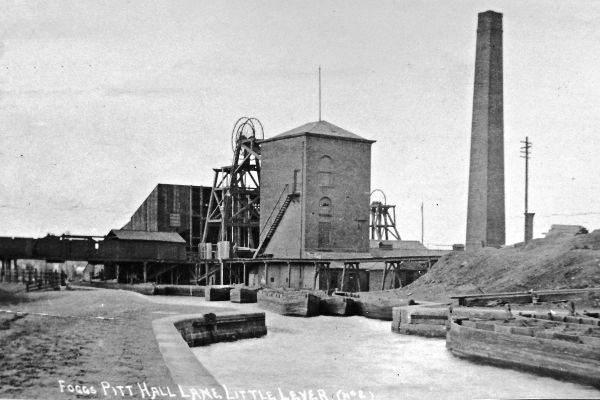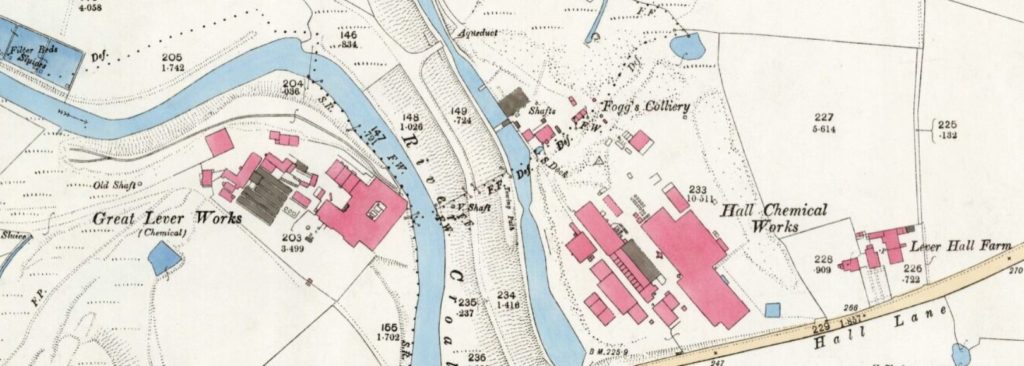
Foggs Colliery c1908
Used with kind permission of Pitheadgear
Foggs colliery was sunk alongside the Bolton arm of the Manchester Bolton & Bury Canal, but it is not shown on the 1850 Ordnance Survey map. The site then was occupied by Knowles’ Coal Pit, which was sunk in the 1820s by Andrew Knowles. Nevertheless, a plan in Bolton Archives shows the extent of coal removed from the Four Foot Mine at Foggs Colliery between 1835 and 1838.
On 7th February 1877 a candle is thought to have set fire to the brattice cloth used to guide air around the Doe Mine workings. Most workmen got out of the pit, but the fire spread quickly and ten men were suffocated. Rescuers were hampered by the fumes, and growing amounts of methane, so they were withdrawn. Eventually there was an explosion. The bodies were recovered as the workings were re-opened. The full report can be found here.
In the colliery’s last twenty years or so the Doe, Five Quarters, Trencherbone Mines were worked, employing an average of 250 men underground and 83 on the surface.
On October 4th 1907 there was an accident in the 16ft 6in. diameter No.1 Shaft (downcast) when the ascending cage hit the descending cage. The former then fell down the shaft, killing the ten men inside. The full report can be found here.
The accompanying photograph shows box boats on the canal. They carried coal in containers which could be lifted into and out of the boat. Also visible is the tall engine house for a vertical steam engine, a system favoured by the Knowles’s. Foggs closed in May 1912.
Sources:
- NMRS Records, Gazetteer of British Collieries
- ZLA/16/1/3 – Bolton Archives and Local Studies Service

OS Map, Lancashire XCV.2 1890
Reproduced by permission of the National Library of Scotland

